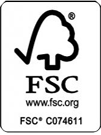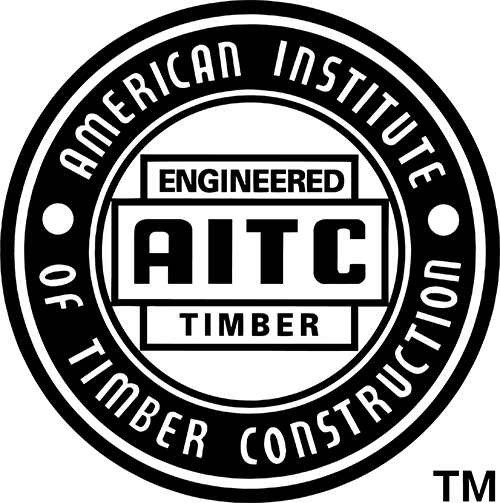GLULAM WOOD SPECIES AND APPEARANCE GRADES
We offer a variety of options that affect the finished appearance, strength, and longevity of our glulam products – from raw materials to coatings. Here is an overview of the variables that should be specified for your next glulam job.
RAW MATERIALS
Wood Species
Southern Yellow Pine (SYP) makes up the majority of our work. It is our material of choice for economy and strength – and is highly recommended for curved members. Douglas Fir, Alaska Yellow Cedar, Red Maple, and other species are also available.

Treated Lumber
For glulam members exposed to weather or harsh outdoor environments, we offer CCA and Penta treated material. Partially exposed members can even be fabricated with treated and non-treated zones.
Forest Stewardship Council™ Certification
We are Forest Stewardship Council™ (FSC®) chain-of-custody certified, making us the right choice for LEED certified projects. FSC® material must be specified.
APPEARANCE GRADES
Appearance grade refers to visible knots and defects on the wood surface. One of the following grades should be specified:
AITC Premium
For jobs where appearance is of critical importance. Allows only very small knots and voids on exposed surfaces. Any other voids and defects are plugged with clear wood inserts, not just wood filler.
AITC Architectural
The most common appearance grade for Unalam jobs. Ideal for exposed projects, where the appearance of natural knots and small voids in the wood is acceptable. Any other voids and defects are plugged with clear wood inserts, not just wood filler.
AITC Industrial
For projects where glulam will be hidden from view or appearance is not critical. Sides of members are planed, but voids or other defects on the edges of laminations are not repaired.
STRENGTH PROPERTIES
Design values are available in ANSI 117-2010, which can be downloaded free here.
Typical SYP Combinations
24F-V3 for simple span beams
24F-V5 for continuous span beams
#47/1:8 or #49/1:10 for columns or other members not loaded primarily in strong axis bending


